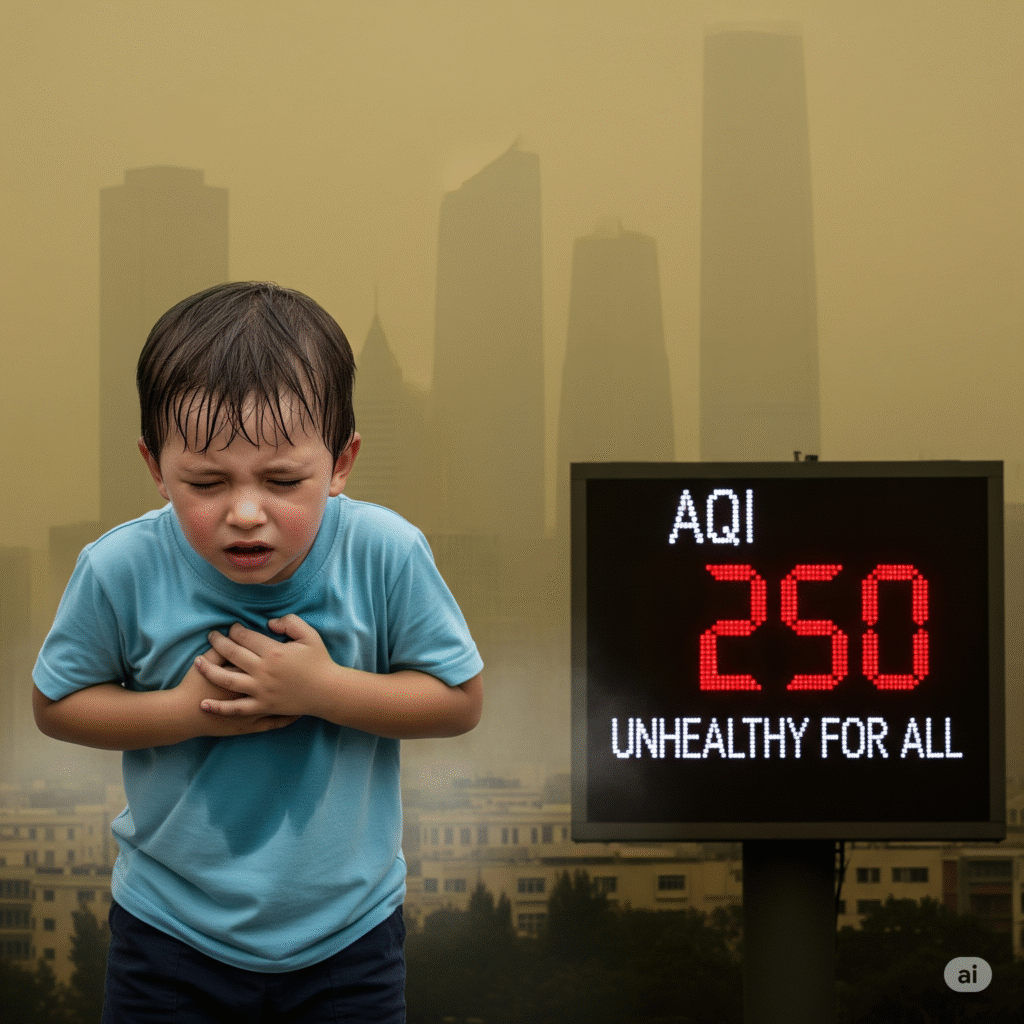The Air Quality Index (AQI) is a key measure of how clean or polluted the air is. While air pollution affects everyone, children are more vulnerable because their lungs are still developing. Understanding the connection between AQI and children’s health can help parents take better precautions and make safer choices for their kids.
<a href=”https://aidailydash.com” class=”cmenu-link”>aidailydash</a> provides real-time AQI updates, making it easier for families to monitor air quality and protect children’s well-being.
What is AQI?
The AQI is a scale that measures the level of pollutants in the air, such as:
- Particulate Matter (PM2.5 and PM10)
- Ozone (O₃)
- Nitrogen Dioxide (NO₂)
- Sulfur Dioxide (SO₂)
- Carbon Monoxide (CO)
The higher the AQI value, the more polluted the air and the greater the health risk.
Why Are Children More at Risk?
Children breathe faster than adults, which means they inhale more air — and more pollutants — per minute. Their immune and respiratory systems are still developing, making it harder for them to fight off harmful effects. Pollutants can:
- Trigger asthma and allergies
- Reduce lung function growth
- Cause coughing, throat irritation, and breathing difficulty
- Increase the risk of respiratory infections
AQI Categories and Their Effects on Children
The AQI scale is divided into six main categories:
- 0–50 (Good): Air quality is safe for everyone.
- 51–100 (Moderate): Acceptable, but sensitive children should be monitored.
- 101–150 (Unhealthy for Sensitive Groups): Children with asthma or allergies may feel symptoms.
- 151–200 (Unhealthy): Most children may experience breathing issues; outdoor activities should be reduced.
- 201–300 (Very Unhealthy): Serious health effects possible; keep children indoors.
- 301+ (Hazardous): Emergency conditions; everyone is at risk, especially kids.
Symptoms to Watch For in Children
Parents should watch for:
- Persistent coughing or wheezing
- Shortness of breath
- Red, itchy eyes
- Unusual tiredness
- Complaints of chest tightness
If these symptoms appear during high AQI days, limit outdoor exposure and consult a doctor if needed.
How to Protect Children from Poor Air Quality
Here are steps to keep children safe:
- Check AQI Daily: Use tools like <a href=”https://aidailydash.com” class=”cmenu-link”>aidailydash</a> for real-time updates.
- Limit Outdoor Play: Especially during peak pollution hours (morning and late evening in winter).
- Use Masks: For older children during outdoor activities on bad AQI days.
- Keep Indoor Air Clean: Use air purifiers and keep windows closed during high pollution periods.
- Stay Hydrated: Water helps the body flush out toxins.
- Add Indoor Plants: Some plants naturally filter pollutants from indoor air.
Long-Term Benefits of AQI Awareness
By monitoring AQI and taking action, parents can:
- Reduce the risk of chronic respiratory issues in children
- Help improve overall immunity and energy levels
- Encourage healthy lifestyle habits for kids
Conclusion
Air pollution is a growing challenge, but with awareness and timely action, parents can protect their children’s health. The AQI is not just a number — it’s a signal that guides us to make smarter choices for our kids’ safety. Stay informed, act early, and give children the gift of clean air for a healthier future.
Check <a href=”https://aidailydash.com” class=”cmenu-link”>aidailydash</a> daily for the latest AQI updates and take control of your family’s air quality.

